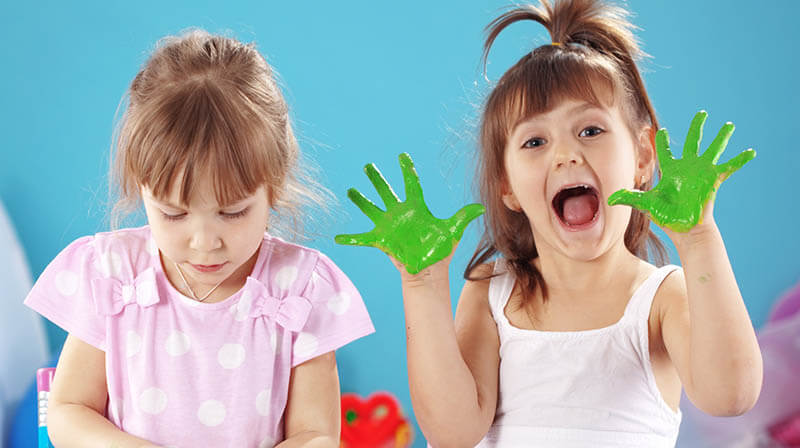When it comes to choosing toys for your child, safety should always be a top priority. Toys not only provide entertainment but also play a crucial role in your child’s development. However, the wrong toy can pose risks such as choking, strangulation, or exposure to harmful substances. As parents, understanding what makes a toy safe can help you make informed decisions and ensure your child’s well-being.
Key Factors to Consider When Choosing Safe Toys
- Age Appropriateness
Always check the recommended age range on the toy’s packaging. Toys designed for older children may have small parts that can be choking hazards for younger kids. Manufacturers use age guidelines based on safety and developmental appropriateness.
- Non-Toxic Materials
Ensure the toy is made from non-toxic, BPA-free materials, especially for infants and toddlers who are prone to putting toys in their mouths. Look for certifications such as ASTM (American Society for Testing and Materials) labels, which indicate that the toy meets safety standards.
- No Small Parts for Young Children
For children under three years old, avoid toys with small, detachable parts. A general rule is that if a toy or part can fit through a toilet paper roll, it’s too small and poses a choking hazard.
- Sturdy Construction
Check for toys that are well-made and durable. Poorly constructed toys can break apart, exposing small parts or sharp edges.
- Avoid Strangulation Hazards
Be cautious of toys with strings, cords, or ribbons longer than 12 inches. These can pose strangulation risks, especially for infants.
- Noise Levels
Some toys, like musical instruments or electronic devices, can produce sounds loud enough to damage a child’s hearing. Test the toy’s volume and ensure it is not excessively loud.
- Magnets and Button Batteries
Avoid toys with small magnets or button batteries, which can be extremely dangerous if swallowed. These items can cause serious internal injuries.
- Washability
For young children, choose toys that are easy to clean and disinfect to prevent the spread of germs.
Recommended Toy Types by Age Group
Infants (0–12 months)
- Rattles and Teethers: Ensure they are made from food-grade, non-toxic materials.
- Soft Toys: Choose stuffed animals or soft toys without small detachable eyes or buttons.
- Activity Mats: Mats with attached toys encourage sensory exploration and motor skills development.
Toddlers (1–3 years)
- Stacking Toys and Blocks: Look for large, lightweight blocks without sharp edges.
- Pull Toys: Ensure they have short cords and sturdy construction.
- Musical Toys: Opt for instruments with smooth surfaces and no detachable parts.
Preschoolers (3–5 years)
- Pretend Play Sets: Choose role-play sets like kitchen toys or toolkits that are free of sharp edges.
- Art Supplies: Crayons, markers, and paints should be non-toxic and washable.
- Ride-On Toys: Check for stability and ensure your child wears a helmet if applicable.
School-Aged Children (6+ years)
- Board Games and Puzzles: Ensure small pieces are stored safely away from younger siblings.
- STEM Toys: Science kits and building sets should come with clear instructions and child-safe components.
- Sports Equipment: Choose age-appropriate gear and include protective equipment like helmets or knee pads.
Tips for Ensuring Toy Safety at Home
- Regular Inspections: Check toys frequently for signs of wear and tear. Discard toys with cracks, broken parts, or loose components.
- Proper Storage: Store toys in a safe, organized manner to prevent tripping hazards. Avoid toy chests with heavy, non-slow-closing lids.
- Supervision: Always supervise young children during playtime, especially with new toys.
- Stay Updated on Recalls: Keep track of toy recalls by checking websites like the Consumer Product Safety Commission (CPSC).
Certifications to Look For
When shopping for toys, look for labels that indicate safety testing and compliance, such as:
- ASTM F963: A standard safety specification for toy safety in the U.S.
- CE Mark: Indicates compliance with European Union safety standards.
- UL Certification: Ensures the safety of electrical components in toys.
Conclusion
Choosing safe toys for your child involves more than just picking the most popular or visually appealing options. By considering age-appropriateness, material safety, and design, you can create a safe and stimulating environment for your child’s growth and enjoyment. Remember, the best toy is one that sparks joy while keeping your child safe.
When in doubt, prioritize simplicity over complexity. Sometimes, the safest and most engaging toys are the classics—blocks, balls, and books—that encourage creativity and learning.
Your child’s safety and happiness go hand in hand, and by following these tips, you can give them the best of both worlds.


1 Comment
MARIA SILVA December 01 , 2022
Cras sit amet nibh libero, in gravida nulla. Nulla vel metus scelerisque ante sollicitudin commodo. Cras purus odio, vestibulum in vulputate at, tempus viverra turpis. Fusce condimentum nunc ac nisi vulputate fringilla. Donec lacinia congue felis in faucibus.